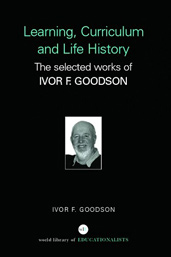Learning, Curriculum and Life Politics: the selected works of Ivor F. Goodson
On Curriculum Form
The 1944 act therefore produced an organisational pattern that was in close resonance with social configurations that were in the tradition established by the Taunton report. However in 1945, the election of a socialist Labour government initiated a period in which the entrenched and explicit class-based educational organisation came under substantial attack. In Britain the battle for the common school was fought late - a symptom of the entrenched class structure of the country. The comprehensive school was thus only ‘won’ in 1965. The 1965 circular had sought to "eliminate separatism in secondary education" (Department of Education and Science [DES] 1965, p. 1). But a close reading of the circular implies that the major concern, perhaps understandably at the time, was with eliminating separatism in the form of different school types and buildings.
Indeed, there were clear indications that far from expecting a new synthesis of curricula, the main concern in 1965 was to defend and extend the grammar school education previously mostly confined to the professional and middle class. The House of Commons motion which led to Circular 10/65 was fairly specific:
This House, conscious of the need to raise educational standards at all levels, and regretting that the realisation of this objective is impeded by the separation of children into different types of secondary schools, notes with approval the efforts of local authorities to reorganise secondary education on comprehensive lines which will preserve all that is valuable in grammar school education for those children who now receive it and make it available to more children (DES 1965, p. 1).
What was unclear and unspoken was whether the logic of providing a comprehensive education for all in the common school would be pursued into also providing a common curriculum.
Yet if it seems that the comprehensive school had thereby been achieved, a more systematic historical analysis of internal curriculum patterns tells another story. In a sense, the move to the common school represents a change only in the geometrical axis of differentiation. Thus, in Figure 1, differentiation from 1944 is vertical, being based on separate school sectors.

